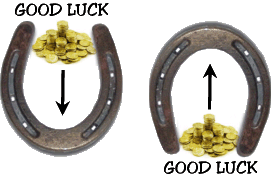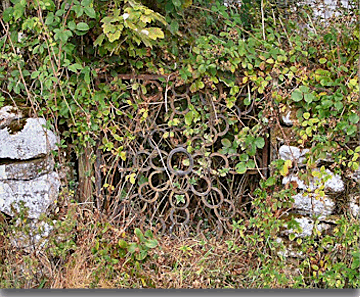
As with any remote upland area the horse and pony have played a vital role in the everyday life of moorfolk, serving as a means of transport and power. Albeit carrying people to and fro, pulling a plough or toting loads across the moor in packhorse trains all was done with the help of a horse or pony. It therefore goes without saying that due to the rough terrain the animals were expected to cover the horseshoe has and still is an integral part of equine welfare. For centuries the humble horseshoe has been associated with good luck and fortune although how this is attracted is a debatable subject.
With regards to how exactly this superstition came about is uncertain; was it because the horseshoe was made of iron which for millennia has been regarded as a magical metal? Perhaps the very shape was associated with some ancient and mythical symbol? Or was it due to the fact that they were worn by horses which in themselves were and are highly prized animals? Horses were not the only animals to be shod, very often plough oxen wore small iron plates (known locally as ‘Q‘s) fixed to each claw. These have never been thought to attract good luck despite them being made of iron. Therefore it is possible to discount the above suggestion that the luck association was due to the metal. What is known is that the earliest documented evidence of a horseshoe being a good luck charm came the late fourteenth century.
There is one legend that tells of a blacksmith called Dunstan, one day he was approached by a man wanting horseshoes put on his feet. Immediately he recognised the man as no other than Satan himself and so firmly nailed the shoes in place. Satan, quite understandably was racked with unbearable pain and Dunstan took the opportunity to chain him up. Dunstan then made a bargain with Satan, he would release him only on the condition that the evil one promised never to enter any building that had a horseshoe hung over the door. Dunstan later went on to become St. Dunstan the archbishop of Canterbury in 959AD.
Either way it was originally considered lucky to find a horse shoe that had been thrown, especially one that still had the nails attached to it. Then in later times it would be enough just to have a shoe that came from anywhere to provide the good luck and fortune. It was said that a horseshoe found by the owner was ten times the power of attracting good fortune that one that was given as a gift.
Having obtained a horseshoe this was then be hung on a door, on many Dartmoor farms it was and still is common to see shoes hung on the doors of barns, dairies, pig stys, chicken coops, feed stores and the farm house. What did and does differ from place to place was the way they were hung, some would be hung with the heel facing upwards whilst others would be pointing downwards. Those who nailed the shoe heel upwards did so in the belief that good fortune would be caught inside it. People who hung their shoes with the heels pointing downwards though the good luck would be trapped inside. Many forges hung their shoes this way probably not because they trapped good luck but they were easier to store this way.

Originally horseshoes had seven holes through which nails were driven into the hoof and there is a theory that this was no design feature. The number seven has always held its place in superstition as a special one as some many aspects of human life and natural events are tied to it; seven ages of man, seven days in a week, seven deadly sins etc. This is the very reason why many lucky horseshoes appear in bracelets, wedding cards etc with seven nail holes. So in order to completely adhere to the belief any horseshoe had to be nailed to a door with seven nails. With such superstitious connotations it is rather amazing that some early churches sported one or more horseshoes nailed to their doors. Perhaps there is some connection with the legend of St. Dunstan, afterall there can be no better association than with a one time Archbishop of Canterbury.
If on any given morning for any given reason dairy maids had trouble churning their butter it was not unheard of for them to drop a heated horseshoe into the churn. The reasoning behind this was they thought the butter to have had a malevolent spell cast upon it, in most cases by the Piskies. The magical properties of the shoe were believed to break any such spell. In all reality if it was a cold morning the extra heat provided by the shoe raised the temperature of the churn.
Although not directly related to the horseshoe, it is thought that the idea of breaking a wishbone and making a wish stems from the fact that the bone resembles a horseshoe and so holds the power of granting good fortune.
Probably the luckiest garden gate I have ever seen on Dartmoor is one that resides at Sheepstor, as can be seen from the photograph below this one certainly was designed to attract good fortune.

There are a few place-names that derive from the horseshoe although these are associated more with its shape as opposed to its superstitions, they are; Horseshoe Bend, Horseshoe Falls and the Horseshoe Stone (boundary marker on the Manaton bounds). The latter was said to be a large boulder on which was/is the shape of a horseshoe.
 Legendary Dartmoor The many aspects past and present of Dartmoor
Legendary Dartmoor The many aspects past and present of Dartmoor
